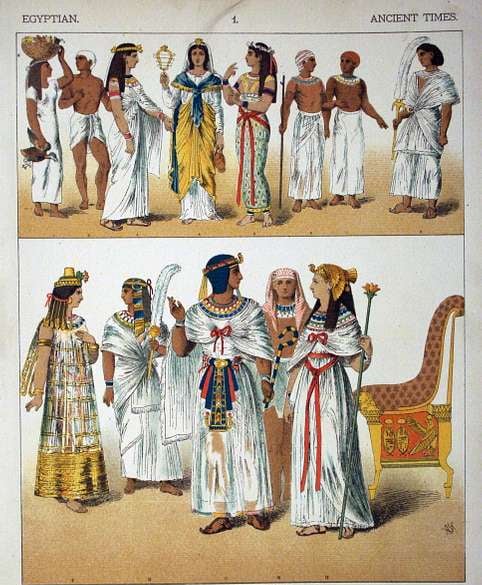History of Legwear
A Brief History of Legwear: From Ancient Times to the Birth of Nylon
Blue
11/13/20252 min read


Dear Reader,
have you ever wondered where modern hosiery came from? To give you an answer we have to go back a few millennia.
Legwear has evolved dramatically over the centuries, serving not only as a means of warmth and protection but also as a canvas for artistry and fashion. The history of legwear mirrors the story of human civilization itself, reflecting changes in culture, technology, and social norms.
The earliest forms of legwear can be traced back to ancient Egypt, where linen wraps were used to cover the legs of both men and women. These wraps were more than just practical garments; they were often intricately adorned, revealing the wearer’s social status and personal style. In ancient Rome and Greece, footwear and leg coverings became more refined. Romans popularized the use of caligae, a type of sandal that featured a distinct design for soldiers, while tunics were often paired with various leg coverings, such as woolen leggings known as femoralia.
As we move into the Middle Ages, legwear became more complex. Tights, known as “hose”, emerged, often made from wool or silk. These garments were initially worn by men and were designed to be fitted and snug, representing a blend of practicality and emerging fashion. Wealthy nobility flaunted their status with elaborately decorated hose, and it wasn’t uncommon for colors and patterns to reflect one’s lineage and rank. Women began to adopt similar styles, leading to the introduction of petticoats, which were worn under dresses to provide both volume and modesty.
The Renaissance marked a turning point in legwear history, with fashion becoming increasingly elaborate. Men wore puffy breeches that set the stage for a more playful approach to fashion. It was during this period that the sewing techniques improved, allowing for more tailored forms that accentuated the legs and allowed greater freedom of movement.
As the 18th and 19th centuries rolled in, legwear continued to evolve. The Industrial Revolution brought about significant changes in textile manufacturing, leading to the introduction of stockings made from silk. These stockings were a luxury item enjoyed by the affluent, often adorned with patterns and intricate designs. The rise of the middle class led to the democratization of fashion, as access to various materials and designs became more widespread.
With the dawn of the 20th century, the world of legwear experienced a seismic shift with the introduction of elastic materials. The 1920s saw the rise of the modern women’s silhouette, and legwear became an essential component of a woman’s wardrobe. It was during this period that the first commercially produced stockings made from synthetic materials appeared, paving the way for incredible advancements in both comfort and style.
Fast forward to the 1930s, and we see the groundbreaking invention that would revolutionize legwear: nylon. This new synthetic fiber offered unprecedented durability and a sleek appearance, changing the way stockings were perceived and worn. No longer just an accessory for the wealthy, nylon stockings quickly became a staple for women across all walks of life. However, this topic deserves a more in-depth discussion.
In my next article, we will delve deeper into the invention of nylon, exploring its impact on fashion and society. We'll examine how this innovation not only shaped legwear but also altered the entire landscape of textiles and clothing. From its cultural significance during World War II to its ongoing evolution in the fashion world, the story of nylon is one that reflects resilience and innovation in the face of changing times. Stay tuned for an exciting exploration into the fabric that changed legwear forever!
